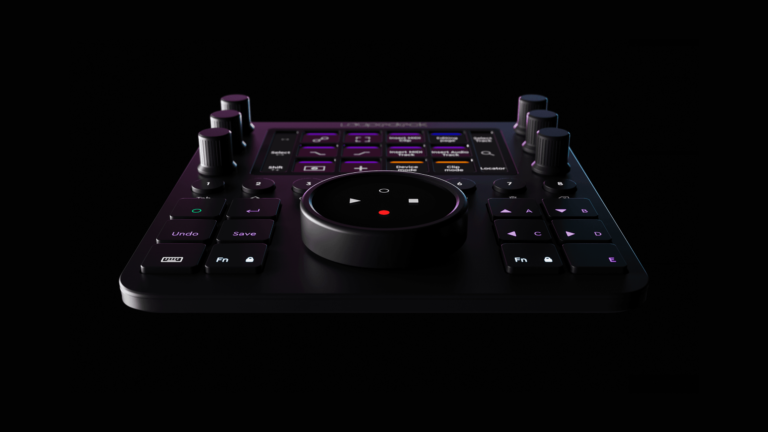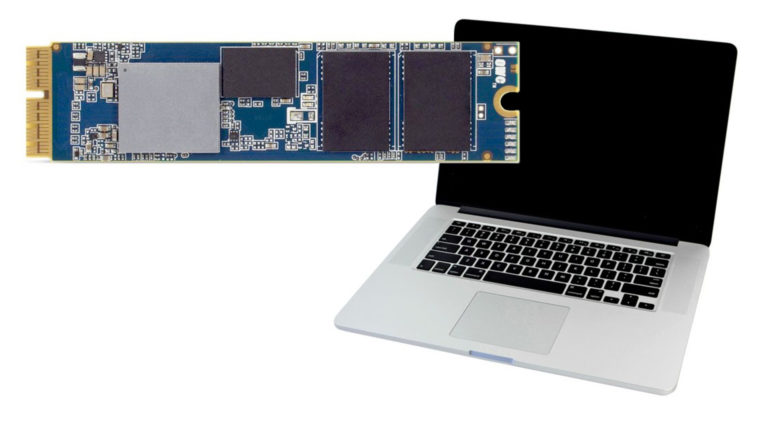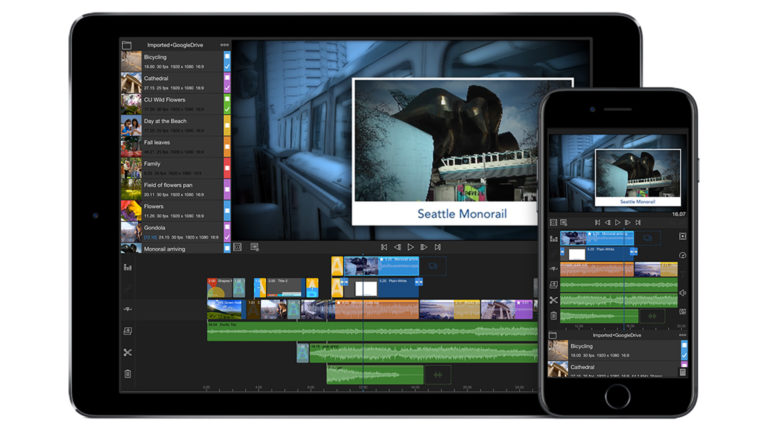Is the Competition Toast?
"desktop video" revolution. It’s 14 years later and this product is now
in version 4, dubbed VT[4], and is being offered in several different
bundles. With an Educational Bundle (for $5,995) or a VT[4] Card and
Software Bundle (for $3,995), the most common configuration is what the
company is calling the VT[4] LIVE! Integrated Production Suite
($6,495). This includes the SX-84 Switcher Expansion (an elaborate
breakout box) and the RS-8 Remote Switcher, which features a fader bar
and lighted source buttons.

with a prodigious illustrated guide as thick as a New York City
telephone directory. Let’s take a look here at some of what VT[4] LIVE!
has to offer.
Y/C or 24 composite sources with audio support, alpha channel and
genlock. If you equip your computer with DV inputs, you can add these
sources to the above allotment. The same goes for any SDI source, but
of course, the NewTek SDI is about the least expensive you will find.
virtual device, you’ll find the hardware option easier to use. I found
the rack-mountable SX-84 expansion board to be well designed and useful
both as a breakout box and as an audio-video patch panel. However, I
would have preferred the nine computer cable jacks along the right to
have been installed on the back of the unit. Since these installations
are more likely to happen just once, they are rather cumbersome
cluttering up the otherwise neat front.
component camera. The system recognized and perfectly synchronized all
three signals, allowing me to live switch into VT[4]’s Digital Disk
Recorder. Each input is supported by a virtual processing amplifier
(proc amp), TBC (time base corrector) and waveform/vectorscope.
However, I am told that up to 8 Y/C or component cameras or up to 24
composite cameras can be connected to the switcher, set to color bars
and VT[4] will automatically calibrate to whatever camera is connected
to Input 1. This is a huge time saver when setting up event shoots. I
also would have liked to have seen at least two DV inputs included with
the system.
video-source switcher with integrated TBCs, a nonlinear editing system,
a 3D animation program, a 3D paint and compositing program, live
Internet streaming, DVD authoring and a suite of virtual equipment
created in software (monitors, decks, waveform/vectorscope, audio
mixer, etc.).
Timeline edit mode across the top, a bin of clips across the lower left
and the VT-Vision "program monitor" in the lower right. Notice that I’m
building a 2-picture-in-picture effect over an American flag
background, but obviously, the flag clip is too short.
window (left side overlay), "untwirled" the "Playback Speed" controller
and changed the percentage of speed from 100 to 10. VT-Edit
automatically extends the clip to represent the new duration with the
Edit Properties panel. In Control Tree view, you have to drag it out as
shown here on the timeline. Now the flag overlaps the two clips to be
DVE’d over it.
Notice the large array of control options on the left, where I have
changed the size, rotation, position and edge of the clip. Begin, end
and final key frames are indicated as thin, pink vertical lines in the
timeline above the Position Panel. Playback is instantaneous.
in two modes, LightWave Layout (shown here) and Modeler (right). Here
is where objects are assembled on a stage and given motion, keyframes,
lighting, etc. Notice the timeline at the bottom, where keyframes are
stored.
load the basic elements of objects into the Layer Controls where cut,
paste and other constructive tools are used. The object is shown in
four view panels, which can be changed as needed.
Switcher, sitting beneath it, complement the VT[4] hardware. Both units
plug directly into, and receive their power and signals from, the host
computer. The SX-84 might serve better if connections are made at the
back of the unit.
editing, timeline editing or EDL list. The EDL includes live picon
support, but unfortunately, there is no playback cursor in the EDL
mode, which would make this mode even more useful.
cursor passes over them. Control-click a sequence of picons and drag
the group to the timeline to create an instant storyboard playback.
This is the fastest way to start an edit, after which I would switch to
the timeline mode for refinement of durations and addition of effects.
method of designing DVE picture-in-picture effects. Gross control of
DVEs supported by the Positioning Panel, which features the clip in a
wider field and allows the user to click and grab keyframeable nodes
that control size, rotation and positioning. Once these are set, the
user can open a unique Control Tree. This is a hierarchical text
outline with "twirlies" like Adobe After Effects that offer an array of
parameters, including edge softness, transparency, color and shadows.
These are offered as part of a complex SDK program that works under the
3D animation software. In other words, you can do warps, but first you
have to learn the animation software and the SDK.
highly professional floating point audio record algorithm that provides
12dB of headroom (nearly eliminating the possibility of distortion on
digital recording).
full-blown version of LightWave [8], is worth the entire price.
LightWave 3D is the easiest of the four leading 3D animation software
programs popular in feature film and commercial production today (the
others being 3ds max, Maya and Softimage XSI). LightWave is a very
mature program that lets the user create sophisticated characters,
lighting and scenery in a comparatively short time. The end product of
LightWave is a sequence of picture files. These can be exported to the
NLE for instant playback and output to tape, forming a seamless
creation-distribution engine upon which an entire career may be based.
In VT[4], Aura serves both LightWave and the NLE programs. In VT-Edit,
Aura can replace Adobe Photoshop as your favorite paint program, by
offering a range of functions, which were designed specifically for
video and the ability to animate these functions over time, using
keyframes. An Aura scripting language, called George, allows the user
to create macros that control any function of Aura, and to recall these
routines with one mouse click.
programs and insert pre-edited sequences that are output live to the
Internet. VT-Stream uses Windows Media Encoder that provides up to 10
simultaneous viewers without the need for a dedicated server.
Ulead, known as DVD Workshop 2. Consider this software a nice throw-in
for possible DVD and CD creation, but otherwise, not too remarkable.
to build a fully functional desktop video studio, which helps avoid the
inevitability of acquiring additional equipment that can certainly
double the cost of the basic tape deck and NLE package. These include a
keyframeable proc amp and color corrector, waveform/vectorscope,
standards converter, chromakeyer and character generator.
potential user disregard the eventual necessity of augmenting the edit
suite with some professional level support tools such as a professional
quality video monitor, audio patch bay, amplifier and speakers.










Leave a Reply